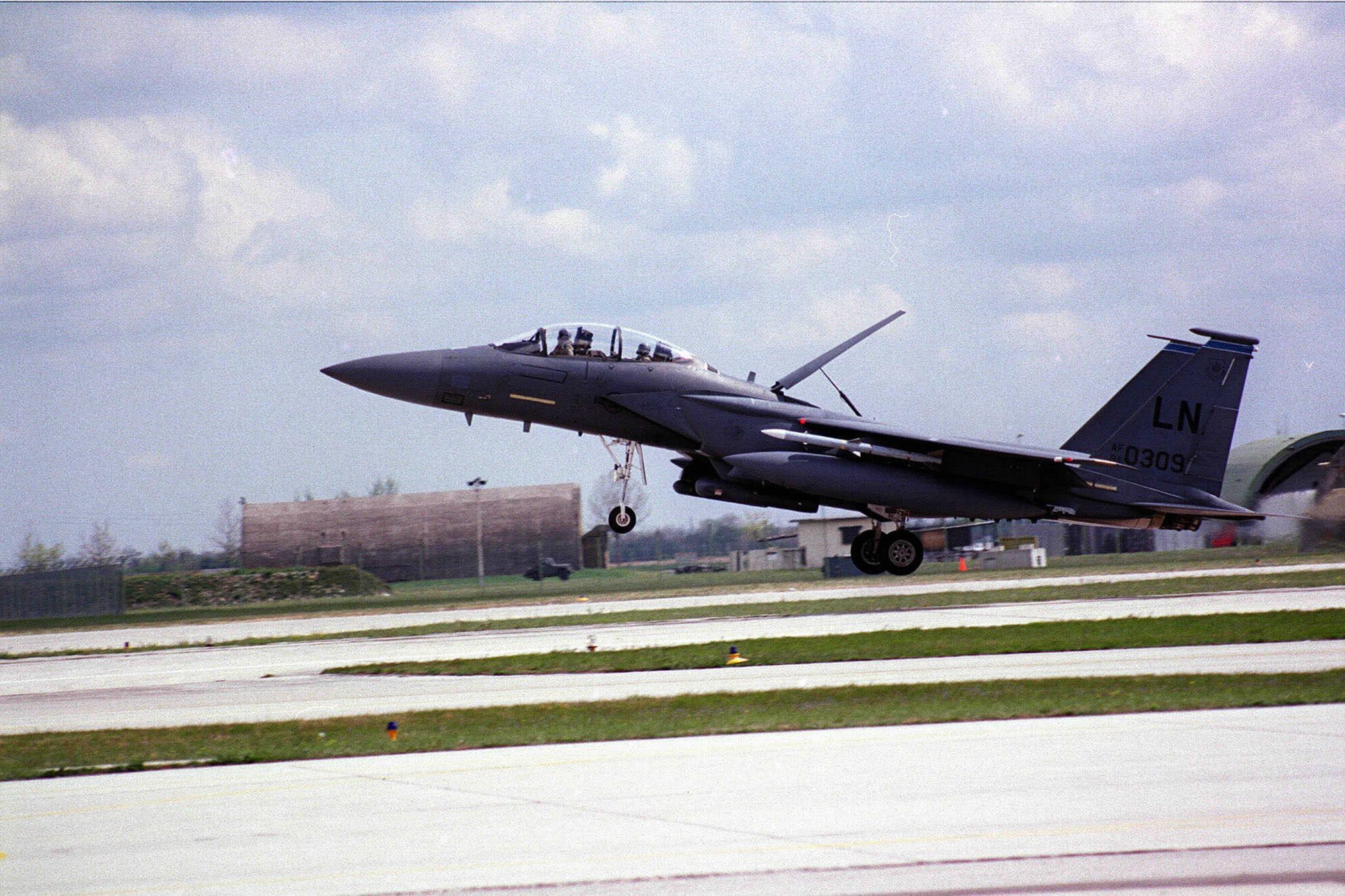Last week, a US Air Force C-17 transport plane landed at the Royal Air Force base (RAF) in Lakenheath, in Eastern England.
The flight was designed for aviation enthusiasts who follow military and civilian aircraft online to detect it. The C-17 kept its transponder on throughout the flight, making it detectable, unlike the B-2 bombers that bombed Iran on July 22. The plane had taken off from Kirtland Air Force Base in New Mexico, one of the largest storage centers for US atomic bombs, and after unloading at Lakenheath, it returned to Kirtland. The British base houses 52 F-35A and an equal number of F-15E aircraft from the US Air Force. These 104 aircraft have the capability to carry and launch nuclear weapons.
The fact that the plane did not stop at Lakenheath raised suspicions among some analysts, like William Alberque, former director of the NATO Arms Control, Disarmament, and Non-Proliferation Center, who saw in the mission all the characteristics of the transport operations of the B-61 tactical atomic bombs Model 12 of the US Air Force. These theories were also supported by the reinforcement works on hangars and other facilities taking place at Lakenheath and at Marham base further south, where the UK plans to station the 12 F-35A aircraft with nuclear capability it will buy from the US.
These F-35 aircraft will also be equipped with B-61 Model 12. The aircraft will start arriving from 2030. But the events with the C-17 that traveled from Kirtland to Lakenheath last Friday indicate that the bombs have likely already arrived. And not for use by the UK, but by the United States.
The arrival of the B-61s at Lakenheath also significantly reinforces US nuclear capability in Europe. Prior to this deployment, the US had atomic bombs (presumably all B-61 Model 12) at six bases in five countries; Italy (Aviano and Ghedi), Belgium (Kleine Brogel), the Netherlands (Volkel), Turkey (Incirlik), and Germany (Büchel). Although no one knows how many would have arrived in the UK, it is estimated that a C-17 can carry a maximum of about 20 of these devices, increasing the US nuclear arsenal in Europe by 20%.
The reinforcement comes at a time when relations between European NATO countries and Washington have entered a certain truce after the June summit of the Alliance, although mutual distrust - if not hostility - remains, especially amid growing tension between US President Donald Trump and Russian President Vladimir Putin.
Thus, the arrival of the newly arrived US atomic bombs suggests a hardening of US policy towards Russia and a greater commitment from Washington to NATO.
The nuclear reinforcement on this side of the Atlantic seems destined to continue. And, with the exception of France, the US will continue to monopolize it, as the British F-35As will use B-61 Model 12 which will remain American, just like the current Trident missiles on British nuclear submarines, which constitute the UK's only deterrent. This indicates that London can only use the future atomic bombs on its fighter jets if Washington has given its authorization.
Additionally, the British nuclear doctrine is fully subordinated to NATO, indicating that UK nuclear weapons can only be used in a war in which the Atlantic Alliance is involved and has authorized the use of such weapons.
Although neither the British Ministry of Defense nor the US Air Force have confirmed the deployment - citing a policy of "neither confirming nor denying" - the evidence leaves little room for doubt. Everything indicates that the US has once again deployed atomic bombs in the UK, 17 years after withdrawing the last ones it had in the country. Prime Minister Keir Starmer's decision to purchase the F-35As and equip them with US nuclear weapons will enable the British Armed Forces to have aircraft-launched nuclear weapons for the first time since 1998.
This purchase will restore the dual deterrence: the Trident ballistic missiles on the four Vanguard-class submarines (which are actually a version of the US Ohio submarines) and the tactical air strikes with the B-61s launched from the F-34s. From a strategic point of view, Starmer's decision provides flexibility and rapid response capability to the UK.
Politically, it further aligns the UK with NATO's nuclear doctrine, while reinforcing its nuclear dependence on the US. In any case, the British policy of reapproaching the rest of Europe after Brexit focuses on defense, where the UK has more to offer to the EU and where there is more consensus between the Labour Party and the Conservative opposition, with the F-35As playing a key role in that strategy.
The B-61 Model 12 is also a versatile weapon. Guided by GPS, it is very precise and can carry different payloads, providing something increasingly valued in countries' nuclear strategies: flexibility. Its explosive power can range from 0.3 kilotons to 50, that is, from 2% of Hiroshima's to almost three and a half times the bomb that destroyed much of that Japanese city. For its critics, such devices, small, precise, and relatively easy to use, increase the risk of a nuclear conflict.
For now, the potential US B-61s have only created one conflict: a new battle line between the left-wing Labour and Keir Starmer's government. The peace group Campaign for Nuclear Disarmament (NDC), established 67 years ago and with a strong presence in the UK, has demanded that Keir Starmer appear before Parliament and confirm whether US nuclear weapons have returned to the UK, something that seems almost impossible to happen. The NDC is already planning massive protests against the government.
